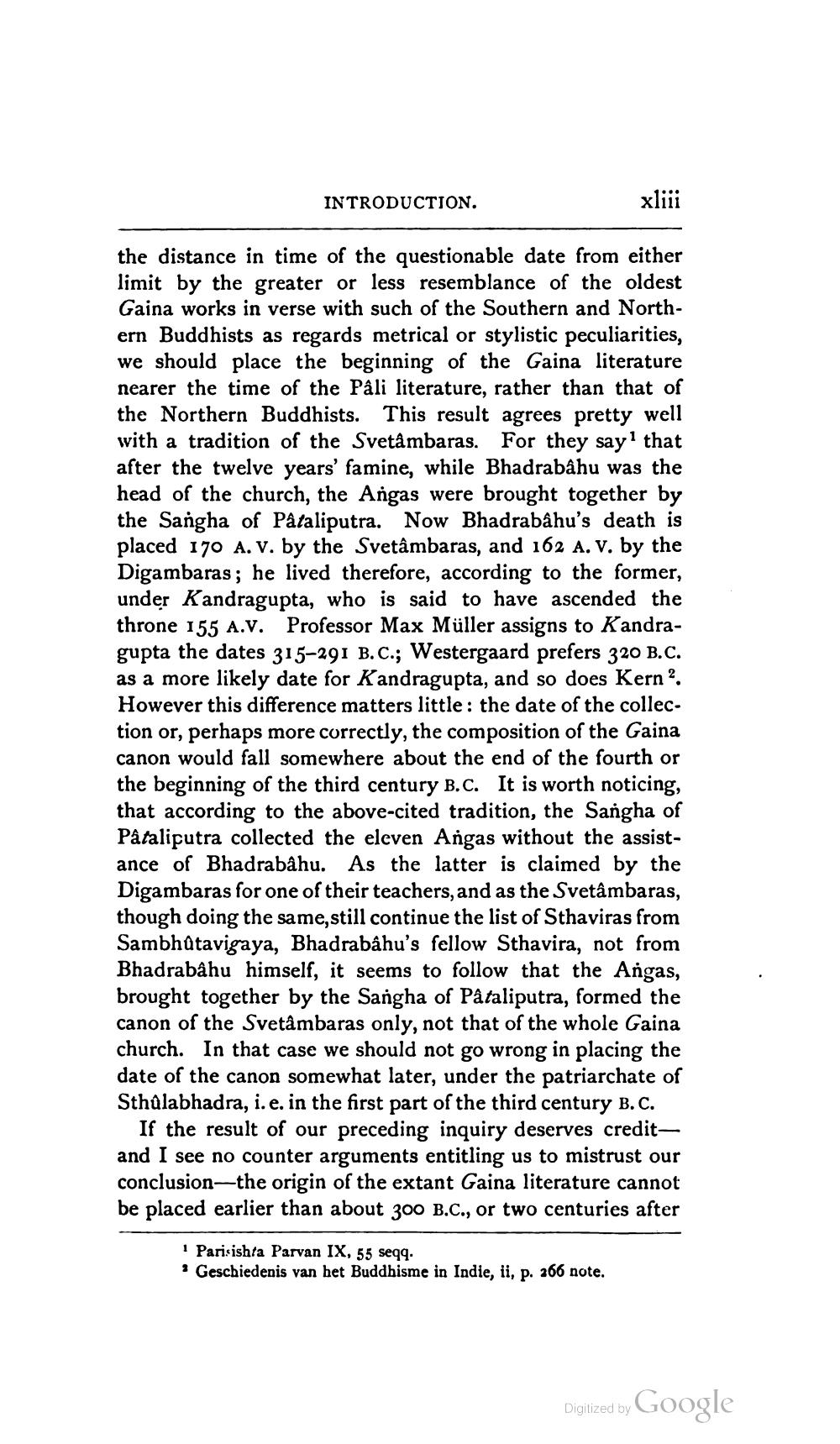________________
INTRODUCTION.
xliii
the distance in time of the questionable date from either limit by the greater or less resemblance of the oldest Gaina works in verse with such of the Southern and Northern Buddhists as regards metrical or stylistic peculiarities, we should place the beginning of the Gaina literature nearer the time of the Pâli literature, rather than that of the Northern Buddhists. This result agrees pretty well with a tradition of the Svetâmbaras. For they say that after the twelve years' famine, while Bhadrabâhu was the head of the church, the Angas were brought together by the Sangha of Pataliputra. Now Bhadrabahu's death is placed 170 A. V. by the Svetâmbaras, and 162 A. V. by the Digambaras; he lived therefore, according to the former, under Kandragupta, who is said to have ascended the throne 155 A.V. Professor Max Müller assigns to Kandragupta the dates 315-291 B.C.; Westergaard prefers 320 B.C. as a more likely date for Kandragupta, and so does Kern?. However this difference matters little: the date of the collection or, perhaps more correctly, the composition of the Gaina canon would fall somewhere about the end of the fourth or the beginning of the third century B.C. It is worth noticing, that according to the above-cited tradition, the Sangha of Påtaliputra collected the eleven Angas without the assistance of Bhadrabahu. As the latter is claimed by the Digambaras for one of their teachers, and as the Svetâmbaras, though doing the same,still continue the list of Sthaviras from Sambhůtavigaya, Bhadrabâhu's fellow Sthavira, not from Bhadrabâhu himself, it seems to follow that the Angas, brought together by the Sangha of Pâtaliputra, formed the canon of the Svetâmbaras only, not that of the whole Gaina church. In that case we should not go wrong in placing the date of the canon somewhat later, under the patriarchate of Sthûlabhadra, i.e. in the first part of the third century B.C.
If the result of our preceding inquiry deserves creditand I see no counter arguments entitling us to mistrust our conclusion—the origin of the extant Gaina literature cannot be placed earlier than about 300 B.C., or two centuries after
i Parisishta Parvan IX, 55 seqq. Geschiedenis van het Buddhisme in Indie, ii, p. 266 note.
Digitized by Google




